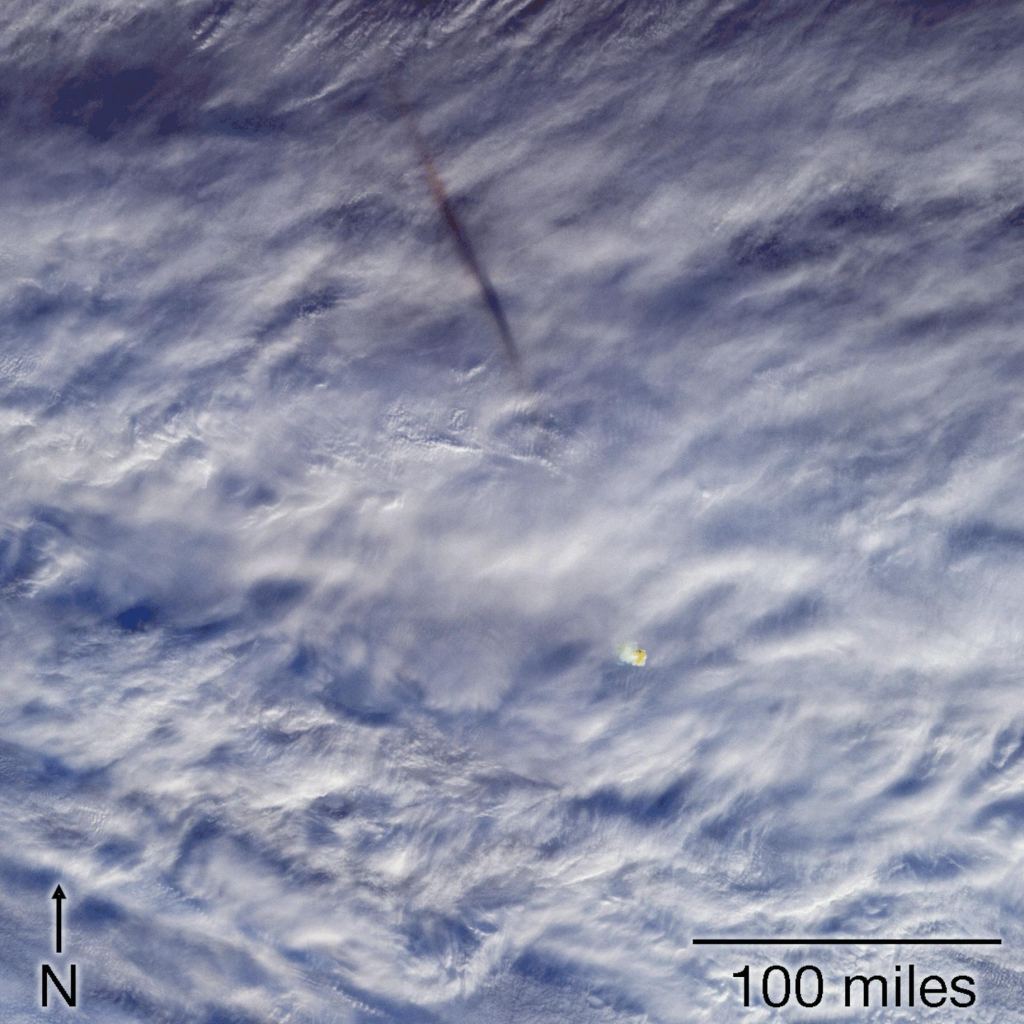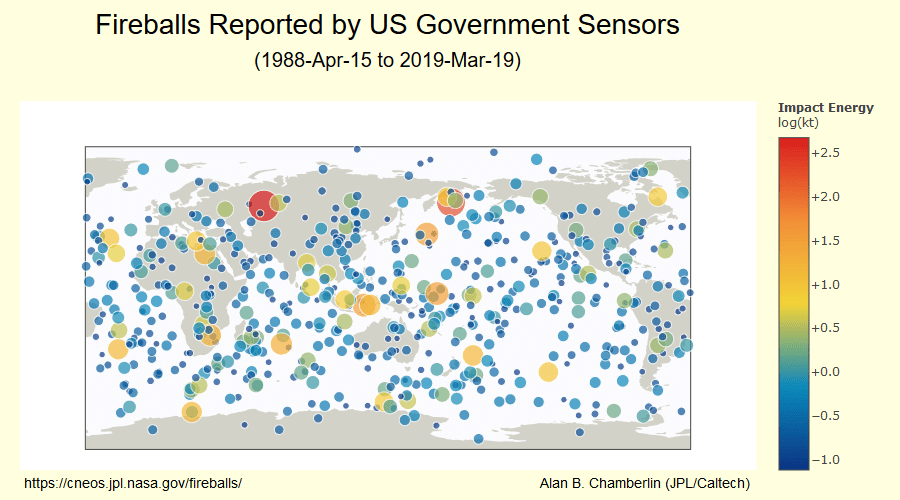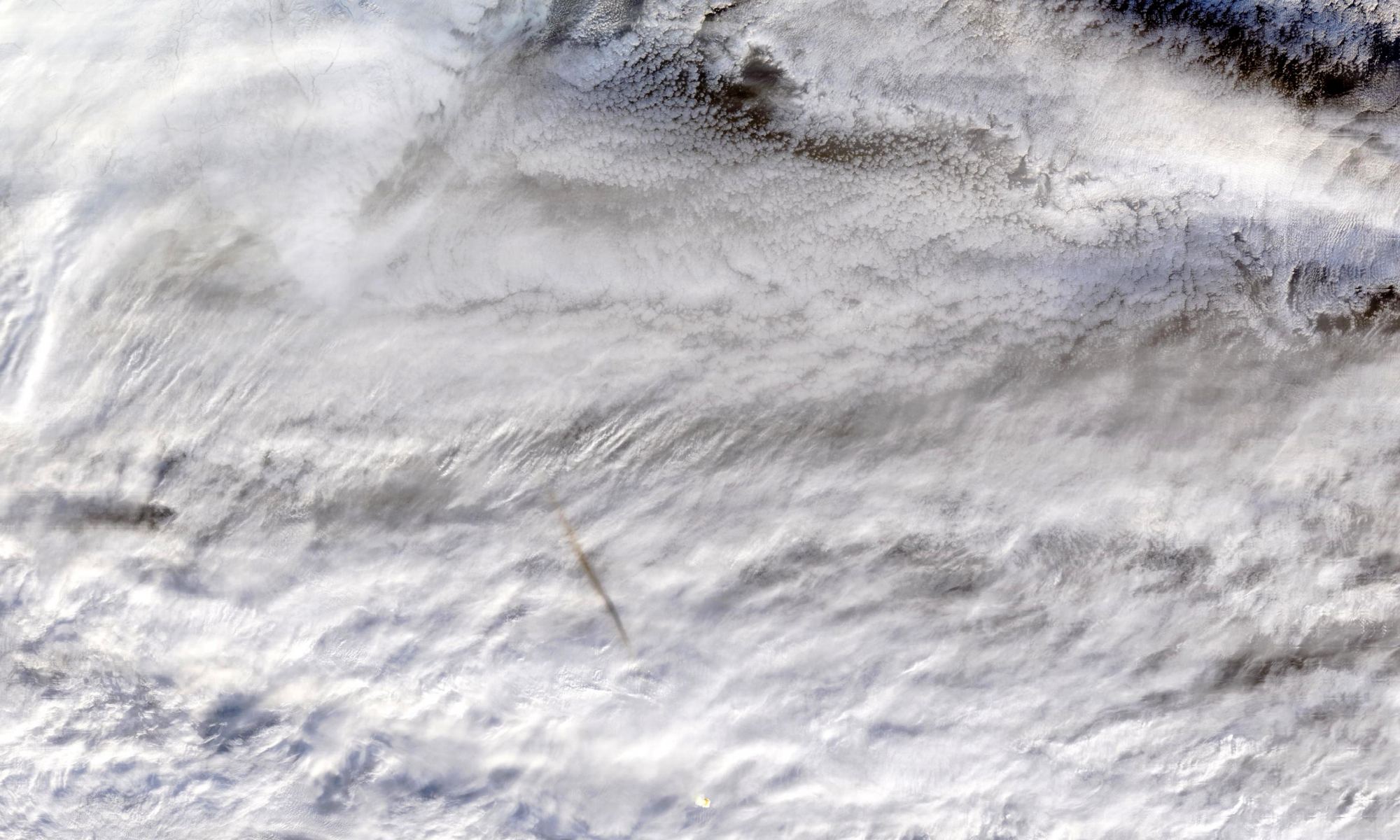When a meteor strike the Earth’s atmosphere, a magnificent (and potentially deadly) explosion is often the result. The term for this is “fireball” (or bolide), which is used to describe exceptionally bright meteor explosions that are bright enough to be seen over a very wide area. A well-known example of this is the Chelyabinsk meteor, a superbolide that exploded in the skies over a small Russian town in February of 2013.
On December 18th, 2018, another fireball appeared in the skies over Russia that exploded at an altitude of about 26 km (16 mi) above the Bering Sea. The resulting debris was observed by instruments aboard the NASA Terra Earth Observation System (EOS) satellite, which captured images of the remnants of the large meteor a few minutes after it exploded.
The images were captured by five of the nine cameras on Terra‘s Multi-angle Imaging SpectroRadiometer (MISR), which were then combined to create an image sequence (see below). The images were taken at 23:55 UTC (07:55 EDT; 04:55 PDT), just minutes after the meteor exploded, and show the meteor’s trail through Earth’s atmosphere and the shadow it cast on the cloud tops.

As you can see from the still image above, the shadow created by the low Sun angle appears to the northwest, behind the fragments of the meteor. The orange-tinted cloud to the lower left is what remains of the fireball that the explosion left behind by super-heating the atmosphere as it passed through it. To see the full image sequence, click here.
The still image shown at top was captured by the Moderate Resolution Imaging SpectroRadiometer (MODIS) instrument just five minutes before the MISR sequence was acquired – at 23:50 UTC (07:50 EDT; 04:50 PDT). This true-color image showed the remnants of the meteor’s passage and also managed to capture the dark shadow being cast on the white cloud tops.
Thankfully, the explosion took place over open waters and at a very high altitude, and therefore posed no threat to anyone on the ground. This was especially fortunate considering that fireballs are a fairly common occurrence and this was the most powerful one observed since the Chelyabinsk meteor.
In fact, the explosion that resulted from this meteor entering Earth’s atmosphere is estimated to have released 173 kilotons of energy. For comparison, that is more than 10 times the energy released by the atomic bomb that was detonated over Hiroshima on August 6th, 1945 – at the end of World War II.

While this is significantly less than the explosive force of the Chelyabinsk meteor, which unleashed an estimated 400–500 kilotons (26 to 33 times of the Hiroshima blast), this explosion took place closer to the surface. Having exploded at a height of 29.7 km (18.5 mi), most of the force of the Chelyabinsk meteor was absorbed by Earth’s atmosphere.
Still, the damage caused by the shockwave was considerable, with a reported 1,500 people being seriously injured and damage caused to 7,200 buildings in six cities across the region. So while this latest fireball caused no apparent harm, it nevertheless illustrates the importance of regular monitoring when dealing with Near-Earth Objects (NEOs).
Fireballs and other events related to NEOs are cataloged in the NASA Center for Near Earth Object Studies (CNEOS) database. This information is helping astronomers and scientists develop various proposals for planetary defense, which may become necessary someday. Sooner or later, a larger object might pass too close to the Earth or threaten a densely populated area.
Further Reading: NASA

